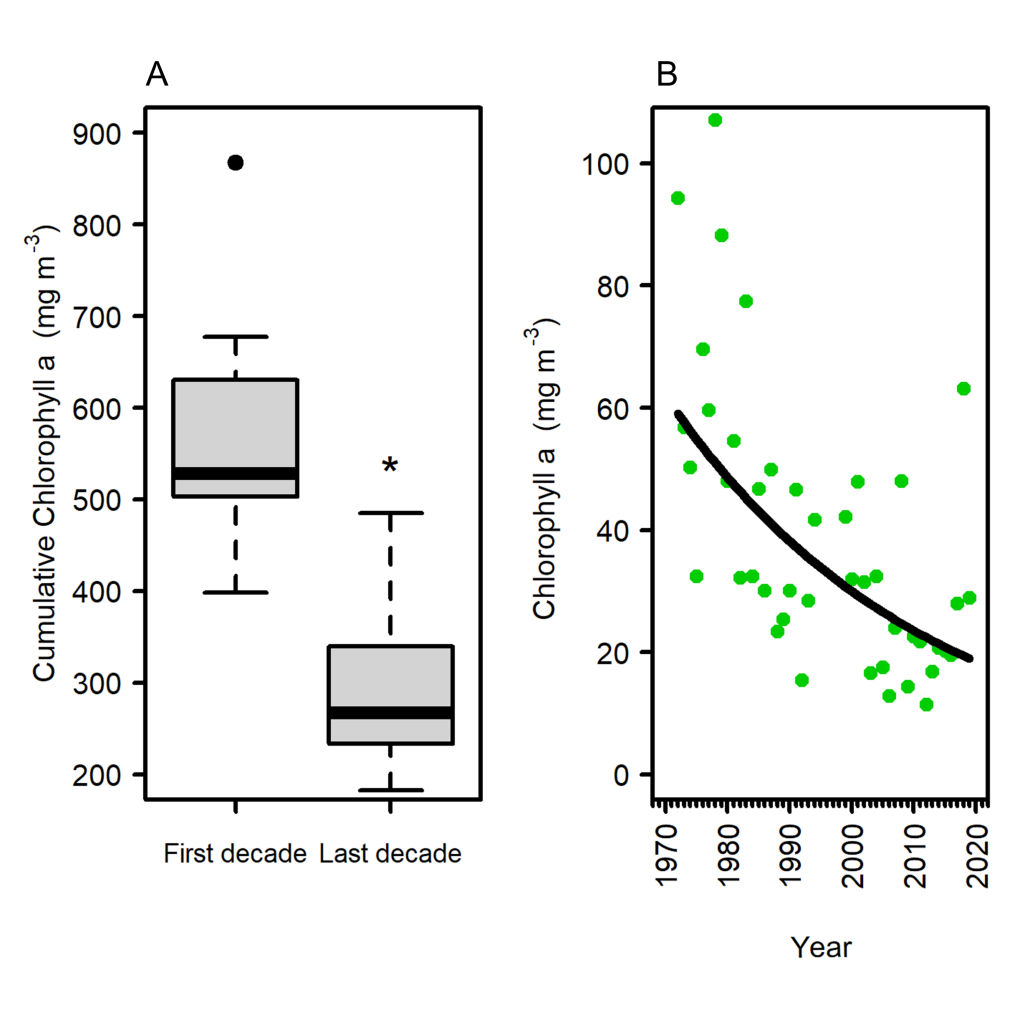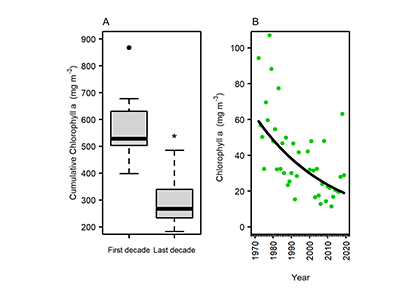Phytoplankton are the main primary producers in the ocean and fuel marine food webs. Long-term shifts in phytoplankton biomass are useful for understanding the context of short-term changes and for examining the relationships between climate indices and phytoplankton dynamics. However, current monitoring programs often offer too short a time frame to disentangle these relationships.
In a recent publication in the Proceedings of the National Academy of Sciences, data from the Narragansett Bay, RI Long-Term Plankton Time Series, were used to examine long-term trends in Chlorophyll a, a proxy for phytoplankton biomass. The magnitude of the winter-spring bloom and of annual phytoplankton biomass declined by about half from 1968 to 2019 (Figure 1). The winter–spring bloom, which fuels coastal ecosystems, occurred about five days earlier each decade. The authors found these changes were associated with multiple environmental factors impacted by climate change, including warming surface seawater temperatures and reduced nutrient concentrations.

Figure 1: In addition to long-term trends, the authors observed that phytoplankton biomass in Narragansett Bay was highly variable similar to other coastal and open ocean time series they analyzed. A high degree of variation in phytoplankton biomass means that it can take decades to identify a trend from the noise in a dataset. This highlights the need to sustain ecosystem monitoring of phytoplankton and other environmental factors for the long term globally. These results provide the first step to understanding the effect of climate change and anthropogenic inputs at the base of the food web, which will inform future research to determine how this change implicates the rest of the ecosystem.
A major secondary component of this study was the digitization of much of the historical dataset from 1959-1999, which required the lead author to obtain, organize, and digitally record 30 years of physical data from a storage closet and harmonize it with digitized data from 2000-2019. All biological and environmental data from this time series are now publicly available at BCO-DMO for scientists, managers, and educators to explore and utilize.
Authors:
Patricia S. Thibodeau (University of New England) @PattyPlankton
Gavino Puggioni (University of Rhode Island)
Jacob Strock (University of Rhode Island)
David G. Borkman (Rhode Island Department of Environmental Management, Office of Water Resources–Shellfish)
Tatiana A. Rynearson (University of Rhode Island) @RynearsonLab




